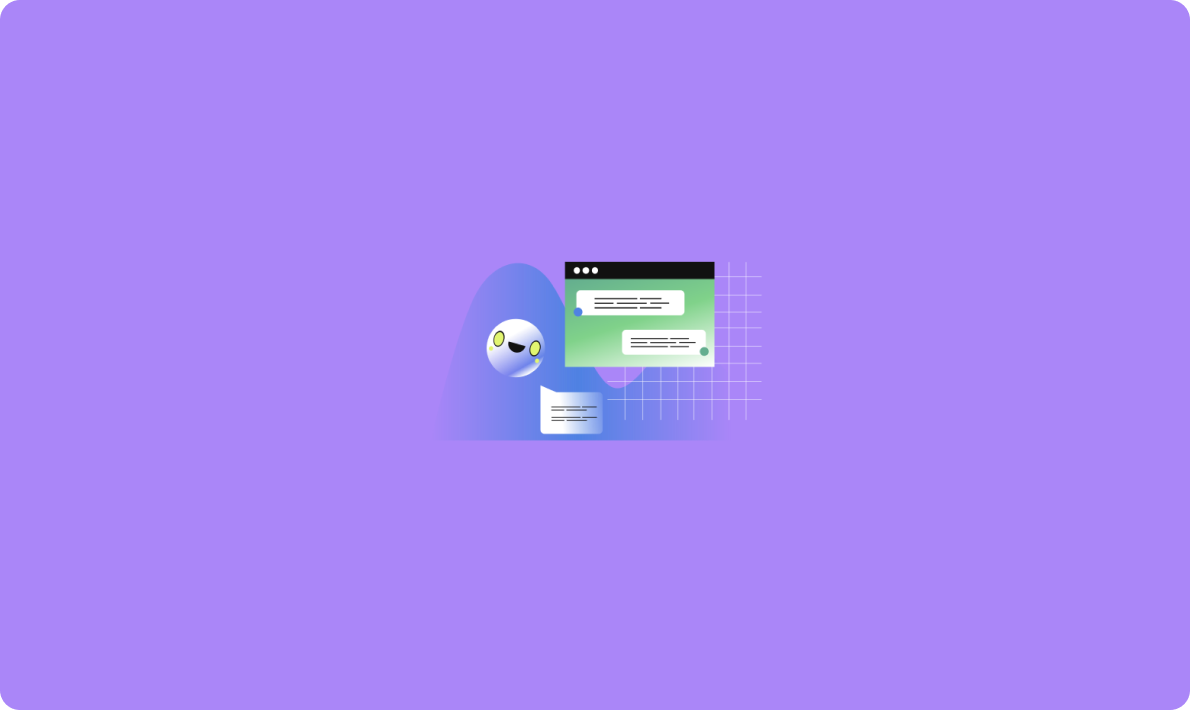
企業(yè)工商數(shù)據(jù)API用哪種?
除此此外我們還可以手動(dòng)編譯:
cd D:\Study\Go\package\pkg\mod\github.com\swaggo\swag@v1.16.1\cmd\swag
go build -o swag.exe ./main.go2.此處由于我是 windows 其安裝目錄如下, 通過(guò)CMD命令或者PowerShell查看.
# CMD
> dir "%GOPATH%/bin/" /B
swag
swagger.exe
# PowerShell
> ls $env:GOPATH/bin
Directory: D:\Study\Go\package\bin
-a--- 2023/6/12 14:59 14539264 swag.exe
-a--- 2023/6/13 9:49 24419840 swagger.exe其他安裝方式,例如二進(jìn)制方式安裝或者容器方式安裝。

Docker 安裝方式
# 鏡像拉取
docker pull quay.io/goswagger/swagger
# 在 Winwdows 中即在Go開(kāi)發(fā)項(xiàng)目下執(zhí)行
docker run --rm -it --env GOPATH=/go -v %CD%:/go/src -w /go/src quay.io/goswagger/swagger
# 在 Linux 中
docker run --rm -it --env GOPATH=/go -v $pwd:/go/src -w /go/src quay.io/goswagger/swaggerpackage main?下添加通用API注釋, 注釋解析。package main
import (
"errors"
"net/http"
"github.com/gin-gonic/gin"
"github.com/swaggo/swag/example/celler/controller"
_ "github.com/swaggo/swag/example/celler/docs"
"github.com/swaggo/swag/example/celler/httputil"
swaggerFiles "github.com/swaggo/files"
ginSwagger "github.com/swaggo/gin-swagger"
)
// @title Swagger Example API
// @version 1.0
// @description This is a sample server celler server.
// @termsOfService http://swagger.io/terms/
// @contact.name API Support
// @contact.url http://www.swagger.io/support
// @contact.email support@swagger.io
// @license.name Apache 2.0
// @license.url http://www.apache.org/licenses/LICENSE-2.0.html
// @host localhost:8080
// @BasePath /api/v1
// @securityDefinitions.basic BasicAuth
// @securityDefinitions.apikey ApiKeyAuth
// @in header
// @name Authorization
// @description Description for what is this security definition being used
// @securitydefinitions.oauth2.application OAuth2Application
// @tokenUrl https://example.com/oauth/token
// @scope.write Grants write access
// @scope.admin Grants read and write access to administrative information
// @securitydefinitions.oauth2.implicit OAuth2Implicit
// @authorizationUrl https://example.com/oauth/authorize
// @scope.write Grants write access
// @scope.admin Grants read and write access to administrative information
// @securitydefinitions.oauth2.password OAuth2Password
// @tokenUrl https://example.com/oauth/token
// @scope.read Grants read access
// @scope.write Grants write access
// @scope.admin Grants read and write access to administrative information
// @securitydefinitions.oauth2.accessCode OAuth2AccessCode
// @tokenUrl https://example.com/oauth/token
// @authorizationUrl https://example.com/oauth/authorize
// @scope.admin Grants read and write access to administrative information
func main() {
r := gin.Default()
c := controller.NewController()
v1 := r.Group("/api/v1")
{
admin := v1.Group("/admin") {
admin.Use(auth())
admin.POST("/auth", c.Auth)
}
// 路由分組
examples := v1.Group("/examples"){
examples.GET("ping", c.PingExample)
examples.GET("calc", c.CalcExample)
examples.GET("groups/:group_id/accounts/:account_id", c.PathParamsExample)
examples.GET("header", c.HeaderExample)
examples.GET("securities", c.SecuritiesExample)
examples.GET("attribute", c.AttributeExample)
}
}
// 關(guān)鍵點(diǎn)設(shè)置 Swagger 路由
r.GET("/swagger/*any", ginSwagger.WrapHandler(swaggerFiles.Handler))
r.Run(":8080")
}
func auth() gin.HandlerFunc {
return func(c *gin.Context) {
if len(c.GetHeader("Authorization")) == 0 {
httputil.NewError(c, http.StatusUnauthorized, errors.New("Authorization is required Header"))
c.Abort()
}
c.Next()
}
}此外,一些通用API信息可以動(dòng)態(tài)設(shè)置。生成的代碼包文檔導(dǎo)出SwaggerInfo變量,我們可以使用該變量以編程方式設(shè)置標(biāo)題、描述、版本、主機(jī)和基本路徑。
package main
import (
"github.com/gin-gonic/gin"
"github.com/swaggo/files"
"github.com/swaggo/gin-swagger"
"./docs" // docs is generated by Swag CLI, you have to import it.
)
// @contact.name API Support
// @contact.url http://www.swagger.io/support
// @contact.email support@swagger.io
// @license.name Apache 2.0
// @license.url http://www.apache.org/licenses/LICENSE-2.0.html
func main() {
// 以編程方式設(shè)置swagger信息
docs.SwaggerInfo.Title = "Swagger Example API"
docs.SwaggerInfo.Description = "This is a sample server Petstore server."
docs.SwaggerInfo.Version = "1.0"
docs.SwaggerInfo.Host = "petstore.swagger.io"
docs.SwaggerInfo.BasePath = "/v2"
docs.SwaggerInfo.Schemes = []string{"http", "https"}
r := gin.New()
// use ginSwagger middleware to serve the API docs
r.GET("/swagger/*any", ginSwagger.WrapHandler(swaggerFiles.Handler))
r.Run()
}GET或者POST請(qǐng)求, 有興趣的朋友請(qǐng)自行查看文檔。// 以下是一個(gè)使用Swagger注釋的示例:
// GET 請(qǐng)求示例
// @Summary get request example
// @Description get request example
// @Tags example
// @Accept json
// @Produce plain
// @Param val1 query int true "used for calc"
// @Param enumstring query string false "string enums" Enums(A, B, C)
// @Param enumint query int false "int enums" Enums(1, 2, 3)
// @Param enumnumber query number false "int enums" Enums(1.1, 1.2, 1.3)
// @Param string query string false "string valid" minlength(5) maxlength(10)
// @Param int query int false "int valid" minimum(1) maximum(10)
// @Param default query string false "string default" default(A)
// @Param example query string false "string example" example(string)
// @Param collection query []string false "string collection" collectionFormat(multi)
// @Param extensions query []string false "string collection" extensions(x-example=test,x-nullable)
// @Param group_id path int true "Group ID"
// @Param group_id path int true "Group ID"
// @Param Authorization header string true "Authentication header"
// @Success 200 {string} string "answer"
// @Failure 400 {string} string "ok"
// @Failure 404 {string} string "ok"
// @Failure 500 {string} string "ok"
// @Router /examples/groups/{group_id}/accounts/{account_id} [get]
func (c *Controller) AttributeExample(ctx *gin.Context) {
// URL路由參數(shù) /{group_id}
groupID, err := strconv.Atoi(ctx.Param("group_id"))
if err != nil {
httputil.NewError(ctx, http.StatusBadRequest, err)
return
}
accountID, err := strconv.Atoi(ctx.Param("account_id"))
if err != nil {
httputil.NewError(ctx, http.StatusBadRequest, err)
return
}
// Header 參數(shù)
auth := ctx.GetHeader("Authorization")
// URL請(qǐng)求參數(shù) ?
ctx.String(http.StatusOK, fmt.Sprintf("enumstring=%s enumint=%s enumnumber=%s string=%s int=%s default=%s group_id=%d account_id=%d Authorization=%s",
ctx.Query("enumstring"),
ctx.Query("enumint"),
ctx.Query("enumnumber"),
ctx.Query("string"),
ctx.Query("int"),
ctx.Query("default"),
groupID,
accountID,
auth,
))
}
// POST 請(qǐng)求示例引入接口安全校驗(yàn)機(jī)制
// models/model.go
package model
type Account struct {
id string form:"id" json:"id" binding:"required" example:"100001"
User string form:"user" json:"user" binding:"required" example:"weiyigeek.top"
Addr string form:"addr" json:"addr" example:"重慶市南岸區(qū)學(xué)府大道"
Hobby []string form:"hobby" json:"hobby" example:"計(jì)算機(jī),烹飪,運(yùn)動(dòng)"
age int form:"age" json:"age" example:"25"
}
// @Summary post request example
// @Description post request example
// @Tags example
// @Accept json
// @Produce plain
// @Param message body model.Account true "Account Info"
// @Success 200 {string} string "success"
// @Failure 500 {string} string "fail"
// @Security ApiKeyAuth
// @Security OAuth2Implicit[admin, write]
// @Router /examples/post [post]
func (c *Controller) PostExample(ctx *gin.Context) {
ctx.JSON(http.StatusOK, gin.H {
"post": "ping",
})
}swag init?命令生成 Swaager UI 所需的?swagger.json?與?swagger.yaml?.# Powershell
> &"$env:GOPATH/bin/swag" init -g .\main.go
2023/06/13 10:40:11 Generate swagger docs....
2023/06/13 10:40:11 Generate general API Info, search dir:./
.....
2023/06/13 10:40:11 create docs.go at docs/docs.go
2023/06/13 10:40:11 create swagger.json at docs/swagger.json
2023/06/13 10:40:11 create swagger.yaml at docs/swagger.yaml"go run ./main.go"命令運(yùn)行此Go gin項(xiàng)目,并使用瀏覽器瀏覽到?http://localhost:8080/swagger/index.html?站點(diǎn), 您將看到Swagger 2.0 Api文檔示例代碼: https://github.com/swaggo/swag/tree/master/example/celler

| annotation | description | example |
|---|---|---|
| title | Required. The title of the application. | // @title Swagger Example API |
| version | Required. Provides the version of the application API. | // @version 1.0 |
| description | A short description of the application. | // @description This is a sample server celler server. |
| tag.name | Name of a tag. | // @tag.name This is the name of the tag |
| tag.description | Description of the tag | // @tag.description Cool Description |
| tag.docs.url | Url of the external Documentation of the tag | // @tag.docs.url https://example.com |
| tag.docs.description | Description of the external Documentation of the tag | // @tag.docs.description Best example documentation |
| termsOfService | The Terms of Service for the API. | // @termsOfService http://swagger.io/terms/ |
| contact.name | The contact information for the exposed API. | // @contact.name API Support |
| contact.url | The URL pointing to the contact information. MUST be in the format of a URL. | // @contact.url http://www.swagger.io/support |
| contact.email | The email address of the contact person/organization. MUST be in the format of an email address. | // @contact.email support@swagger.io |
| license.name | Required. The license name used for the API. | // @license.name Apache 2.0 |
| license.url | A URL to the license used for the API. MUST be in the format of a URL. | // @license.url http://www.apache.org/licenses/LICENSE-2.0.html |
| host | The host (name or ip) serving the API. | // @host localhost:8080 |
| BasePath | The base path on which the API is served. | // @BasePath /api/v1 |
| accept | A list of MIME types the APIs can consume. Note that Accept only affects operations with a request body, such as POST, PUT and PATCH. Value MUST be as described under Mime Types. | // @accept json |
| produce | A list of MIME types the APIs can produce. Value MUST be as described under Mime Types. | // @produce json |
| query.collection.format | The default collection(array) param format in query,enums:csv,multi,pipes,tsv,ssv. If not set, csv is the default. | // @query.collection.format multi |
| schemes | The transfer protocol for the operation that separated by spaces. | // @schemes http https |
| externalDocs.description | Description of the external document. | // @externalDocs.description OpenAPI |
| externalDocs.url | URL of the external document. | // @externalDocs.url https://swagger.io/resources/open-api/ |
| x-name | The extension key, must be start by x- and take only json value | // @x-example-key {“key”: “value”} |
| annotation | description |
|---|---|
| description | A verbose explanation of the operation behavior. |
| description.markdown | A short description of the application. The description will be read from a file. E.g. @description.markdown details will load details.md |
| id | A unique string used to identify the operation. Must be unique among all API operations. |
| tags | A list of tags to each API operation that separated by commas. |
| summary | A short summary of what the operation does. |
| accept | A list of MIME types the APIs can consume. Note that Accept only affects operations with a request body, such as POST, PUT and PATCH. Value MUST be as described under Mime Types. |
| produce | A list of MIME types the APIs can produce. Value MUST be as described under Mime Types. |
| param | Parameters that separated by spaces. param name,param type,data type,is mandatory?,comment attribute(optional) |
| security | Security to each API operation. |
| success | Success response that separated by spaces. return code or default,{param type},data type,comment |
| failure | Failure response that separated by spaces. return code or default,{param type},data type,comment |
| response | As same as success and failure |
| header | Header in response that separated by spaces. return code,{param type},data type,comment |
| router | Path definition that separated by spaces. path,[httpMethod] |
| x-name | The extension key, must be start by x- and take only json value. |
| x-codeSample | Optional Markdown usage. take file as parameter. This will then search for a file named like the summary in the given folder. |
| deprecated | Mark endpoint as deprecated. |
| annotation | description | parameters | example |
|---|---|---|---|
| securitydefinitions.basic | Basic auth. | // @securityDefinitions.basic BasicAuth | |
| securitydefinitions.apikey | API key auth. | in, name, description | // @securityDefinitions.apikey ApiKeyAuth |
| securitydefinitions.oauth2.application | OAuth2 application auth. | tokenUrl, scope, description | // @securitydefinitions.oauth2.application OAuth2Application |
| securitydefinitions.oauth2.implicit | OAuth2 implicit auth. | authorizationUrl, scope, description | // @securitydefinitions.oauth2.implicit OAuth2Implicit |
| securitydefinitions.oauth2.password | OAuth2 password auth. | tokenUrl, scope, description | // @securitydefinitions.oauth2.password OAuth2Password |
| securitydefinitions.oauth2.accessCode | OAuth2 access code auth. | tokenUrl, authorizationUrl, scope, description | // @securitydefinitions.oauth2.accessCode OAuth2AccessCode |
| parameters annotation | example |
|---|---|
| in | // @in header |
| name | // @name Authorization |
| tokenUrl | // @tokenUrl https://example.com/oauth/token |
| authorizationurl | // @authorizationurl https://example.com/oauth/authorize |
| scope.hoge | // @scope.write Grants write access |
| description | // @description OAuth protects our entity endpoints |
溫馨提示: swag接受所有格式正確的MIME類(lèi)型,即match \*/\*,除此之外swag還接受一些MIME類(lèi)型的別名,如下所示:

最新項(xiàng)目參考地址,由于時(shí)間推移(2023年6月13日 16:14:45)建議大家訪問(wèn)查看最新注釋聲明:
https://github.com/swaggo/swag/blob/master/README.md#declarative-comments-format
描述: 此處是作者正在開(kāi)發(fā)的一個(gè)內(nèi)部項(xiàng)目,此處我為其添加上了swagger接口文檔,方便后續(xù)內(nèi)部同事調(diào)用。
package main
// @title devopsapi
// @version v1.1
// @description 安全運(yùn)維中心API接口
// @termsOfService https://weiyigeek.top/terms
// @contact.name 開(kāi)發(fā)者【W(wǎng)eiyiGeek】
// @contact.url http://weiyigeek.top/support
// @contact.email master@weiyigeek.top
// @externalDocs.description DevOpsApi 外部文檔的描述
// @externalDocs.url https://swagger.io/resources/open-api/
// @license.name Apache 2.0
// @license.url http://www.apache.org/licenses/LICENSE-2.0.html
// @host 127.0.0.1:8080
// @BasePath /api/v1
// @schemes http https
// @securityDefinitions.basic BasicAuth
// $ echo -n weiyigeek:123456 | base64
// d2VpeWlnZWVrOjEyMzQ1Ng==
// @securityDefinitions.apikey API鑒權(quán)
// @in header
// @name Authorization
// @description Description for what is this security definition being used
func main() {
// 指定 gin 運(yùn)行模式
gin.SetMode(global.App.Mode)
// 返回一個(gè)新的空白Engine實(shí)例
r := gin.New()
// 設(shè)置日志中間件
r.Use(middleware.Logger())
// 加載自定義路由
router.Load(r)
// 使用 graceful 管理 Gin 服務(wù)從而優(yōu)雅的停止
srv := &graceful.Server{
Timeout: 10 * time.Second,
Server: &http.Server{
// Gin運(yùn)行的監(jiān)聽(tīng)端口
Addr: fmt.Sprintf("%s:%d", global.App.Host, global.App.Port),
// 要調(diào)用的處理程序,http.DefaultServeMux如果為nil
Handler: r,
// MaxHeaderBytes控制服務(wù)器解析請(qǐng)求標(biāo)頭的鍵和值(包括請(qǐng)求行)時(shí)讀取的最大字節(jié)數(shù) (通常情況下不進(jìn)行設(shè)置)
MaxHeaderBytes: 1 << 20,
},
}
// 開(kāi)啟一個(gè)goroutine啟動(dòng)服務(wù) 啟動(dòng) HTTP Server
go func() {
if err := srv.ListenAndServe(); err != nil && err != http.ErrServerClosed {
log.Fatalf("listen: %s\n", err)
}
}()
// 在一個(gè)新的goroutine中調(diào)用給定的函數(shù)
// 等待中斷信號(hào)
quit := make(chan os.Signal)
// kill 默認(rèn)會(huì)發(fā)送 syscall.SIGTERM 信號(hào)
// kill -2 發(fā)送 syscall.SIGINT 信號(hào),我們常用的Ctrl+C就是觸發(fā)系統(tǒng)SIGINT信號(hào)
// kill -9 發(fā)送 syscall.SIGKILL 信號(hào),但是不能被捕獲,所以不需要添加它
// signal.Notify把收到的 syscall.SIGINT或syscall.SIGTERM 信號(hào)轉(zhuǎn)發(fā)給quit
signal.Notify(quit, syscall.SIGINT, syscall.SIGTERM) // 此處不會(huì)阻塞
<-quit // 阻塞在此,當(dāng)接收到上述兩種信號(hào)時(shí)才會(huì)往下執(zhí)行
log.Println("Shutdown Server ...")
// 創(chuàng)建一個(gè) 5 秒的超時(shí)上下文
ctx, cancel := context.WithTimeout(context.Background(), 5*time.Second)
defer cancel()
// 關(guān)閉 HTTP Server
// // 5秒內(nèi)優(yōu)雅關(guān)閉服務(wù)(將未處理完的請(qǐng)求處理完再關(guān)閉服務(wù)),超過(guò)5秒就超時(shí)退出
if err := srv.Shutdown(ctx); err != nil {
log.Fatal("Server Shutdown:", err)
}
log.Println("Server exiting")
}Step 2.Go-Gin項(xiàng)目routers\router.go文件示例。
package routers
// router 目錄負(fù)責(zé)路由相關(guān)內(nèi)容,如定義路由及路由處理函數(shù),路由加載的中間件等
import (
"devopsapi/docs"
"devopsapi/handler/app"
"devopsapi/handler/webhook"
send "devopsapi/pkg/common"
"github.com/gin-gonic/gin"
swaggerfiles "github.com/swaggo/files"
ginSwagger "github.com/swaggo/gin-swagger"
)
// Load 中負(fù)責(zé)加載中間件 middlewares、路由 routes 和 handlers
func Load(r *gin.Engine, mw ...gin.HandlerFunc) *gin.Engine {
// 請(qǐng)求異常處理
r.NoRoute(send.HandleNotFound)
r.NoMethod(send.HandleNotFound)
// 前端項(xiàng)目靜態(tài)資源
r.StaticFile("/", "./static/dist/index.html")
r.StaticFile("/favicon.ico", "./static/dist/favicon.ico")
r.Static("/assets", "./static/dist/assets")
// 單路由
// r.GET("/app/version", app.Version)
// Swagger 對(duì)象方式設(shè)置基礎(chǔ)路徑
docs.SwaggerInfo.BasePath = "/api/v1"
// 路由組
_app := r.Group("/app")
{
_app.GET("/version", app.Version)
_app.POST("/restart", app.Restart)
}
_v1 := r.Group("/api/v1")
{
_v1.POST("/webhook/qywx", webhook.QYWXSendMsg)
_v1.POST("/webhook/dingtalk", webhook.DingtalkSendMsg)
_v1.POST("/webhook/email", webhook.EmailSendMsg)
}
// ginSwagger 路由處理
r.GET("/swagger/*any", ginSwagger.WrapHandler(swaggerfiles.Handler))
// 加載中間件
r.Use(mw...)
return r
}Step 3.Go-Gin項(xiàng)目handler\webhook\qywx.go文件示例,添加了swagger的接口注釋。
package webhook
import (
send "devopsapi/pkg/common"
"devopsapi/pkg/global"
"devopsapi/pkg/util/webhooks"
"fmt"
"log"
"github.com/gin-gonic/gin"
)
type qywxCommonType struct {
Key string form:"key" json:"key" binding:"required"
Type string form:"type" json:"type" binding:"required"
Msg string form:"msg" json:"msg" binding:"required"
User string form:"user" json:"user"
}
type qywxCustomMarkdownType struct {
Key string form:"key" json:"key" binding:"required"
Type string form:"type" json:"type" binding:"required"
Title string form:"title" json:"title" binding:"required"
Project string form:"project" json:"project" binding:"required"
Msg string form:"msg" json:"msg" binding:"required"
UrlText string form:"urltext" json:"urltext"
UrlAddr string form:"urladdr" json:"urladdr"
User string form:"user" json:"user"
}
type qywxImageType struct {
Key string form:"key" json:"key" binding:"required"
Type string form:"type" json:"type" binding:"required"
ImgData string form:"imgdata" json:"imgdata" binding:"required"
ImgMd5 string form:"imgmd5" json:"imgmd5" binding:"required"
}
// 使用企業(yè)微信機(jī)器人發(fā)送信息 (GET)示例 Swagger
// @Summary 企業(yè)微信機(jī)器人信息發(fā)送
// @Description 使用企業(yè)微信機(jī)器人發(fā)送多種類(lèi)型信息到對(duì)應(yīng)群聊
// @Tags 消息通知
// @Accept application/json
// @Produce application/json
// @Param key query string true "鑒權(quán)Key"
// @Param type query string true "消息類(lèi)型"
// @Param msg query string true "發(fā)送的消息"
// @Param user query string false "接收者手機(jī)或名稱"
// @Param title query string false "消息標(biāo)題"
// @Param project query string false "消息主題"
// @Param urltext query string false "消息連接文本"
// @Param urladdr query string false "消息連接"
// @Param imgdata query string false "圖片base64數(shù)據(jù)"
// @Param imgmd5 query string false "圖片MD5值"
// @Success 200 {string} QYWXSendMsg
// @Router /webhook/qywx [POST]
func QYWXSendMsg(c *gin.Context) {
qywx_key := c.Query("key")
qywx_url := fmt.Sprintf("%s%s", global.WebHook.Qywechat, qywx_key)
msg_type := c.Query("type")
....... 此處略過(guò)n行代碼
}Step 4.Go-Gin項(xiàng)目handler\webhook\email.go文件示例,添加了swagger的接口注釋。
type emailType struct {
Type string form:"type" json:"type" binding:"required" example:"text|html|file|tpl"
To []string form:"to" json:"to" binding:"required" example:"master@weiyigeek.top"
Cc []string form:"cc" json:"cc" example:"master@weiyigeek.top"
Subject string form:"subject" json:"subject" binding:"required" example:"郵件主題"
Body string form:"body" json:"body" binding:"required" example:"郵件內(nèi)容"
File string form:"file" json:"file" example:"/app/storage/public/weiyigeek.jpg"
Filename string form:"filename" json:"filename" example:"weiyigeek-作者照片"
Template string form:"tpl" json:"tpl" example:"TemplateVerifiy"
}
// 使用企業(yè)郵箱發(fā)送郵件信息 (POST) 示例 Swagger
// @Summary 企業(yè)郵箱信息發(fā)送
// @Description 使用企業(yè)郵箱發(fā)送多種類(lèi)型的郵件信息
// @Tags 消息通知
// @Accept json
// @Produce json
// @Param type query string true "發(fā)送類(lèi)型"
// @Param body body emailType true "請(qǐng)求body"
// @Success 200 {string} EmailSendMsg
// @Security BasicAuth
// @Security API鑒權(quán)
// @Router /webhook/email [POST]
func EmailSendMsg(c *gin.Context) {
sendType := c.Query("type")
....... 此處略過(guò)n行代碼
}Step 5.命令行進(jìn)入到Go-Gin項(xiàng)目devopsapi目錄中,執(zhí)行?swag init?生成 swagger-ui 所需文件, 生成完畢后便可運(yùn)行該項(xiàng)目。
# PowerShell
cd devopsapi # 進(jìn)入項(xiàng)目根路徑
&"$env:GOPATH/bin/swag" init -g ./main.go -o ./docs # 初始化文檔
# 2023/06/13 17:55:52 Generate swagger docs....
# 2023/06/13 17:55:52 Generate general API Info, search dir:./
# 2023/06/13 17:55:52 Generating webhook.emailType
# 2023/06/13 17:55:52 create docs.go at docs/docs.go
# 2023/06/13 17:55:52 create swagger.json at docs/swagger.json
# 2023/06/13 17:55:52 create swagger.yaml at docs/swagger.yaml
# 運(yùn)行此app應(yīng)用
PS D:\Study\Project\Go\devopsapi> go run .\main.go
Step 6.運(yùn)行后訪問(wèn) http://127.0.0.1:8080/swagger/index.html 查看swagger接口文檔,效果如下所示,

除此之外,我們還可以使用swagger-UI進(jìn)行在線模擬請(qǐng)求我們開(kāi)發(fā)的接口,是不是非常方便呀!

本文至此完畢,更多技術(shù)文章,盡情等待下篇好文!
原文地址: https://blog.weiyigeek.top/2023/6-5-746.html
本文章轉(zhuǎn)載微信公眾號(hào)@全棧工程師修煉指南

企業(yè)工商數(shù)據(jù)API用哪種?

2024年創(chuàng)建社交媒體帖子的最佳圖像工具API

2024年小型企業(yè)的7個(gè)最佳短信應(yīng)用API

用gin寫(xiě)簡(jiǎn)單的crud后端API接口
安全的關(guān)鍵.png)
最新LangChain+GLM4開(kāi)發(fā)AI應(yīng)用程序系列(一):快速入門(mén)篇

2024年您產(chǎn)品必備的10大AI API推薦
安全的關(guān)鍵.png)
GraphRAG:基于PolarDB+通義千問(wèn)api+LangChain的知識(shí)圖譜定制實(shí)踐

使用Node.js、Express和MySQL構(gòu)建REST API

天氣API推薦:精準(zhǔn)獲取氣象數(shù)據(jù)的首選
對(duì)比大模型API的內(nèi)容創(chuàng)意新穎性、情感共鳴力、商業(yè)轉(zhuǎn)化潛力
一鍵對(duì)比試用API 限時(shí)免費(fèi)